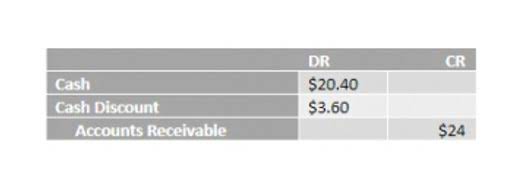
DDB is ideal for an asset that very rapidly loses its value or quickly becomes obsolete. This may be true with certain computer equipment, mobile devices, and other high-tech items, which are generally useful earlier on but become less so as newer models are brought to market. The difference is that DDB will use a depreciation rate that is twice that (double) the rate used in standard declining depreciation.
- The double-declining balance (DDB) depreciation method, also known as the reducing balance method, is one of two common methods a business uses to account for the expense of a long-lived asset.
- Of course, the pace at which the depreciation expense is recognized under accelerated depreciation methods declines over time.
- That’s why depreciation expense is lower in the later years because of the fixed asset’s decreased efficiency and high maintenance cost.
- Under the DDB depreciation method, the equipment loses $80,000 in value during its first year of use, $48,000 in the second and so on until it reaches its salvage price of $25,000 in year five.
- The DDB depreciation method offers businesses a strategic approach to accelerate depreciation.
How the Double Declining Balance Depreciation Method Works
- The beginning of period (BoP) book value of the PP&E for Year 1 is linked to our purchase cost cell, i.e.
- DDB depreciation is less advantageous when a business owner wants to spread out the tax benefits of depreciation over a product’s useful life.
- In summary, the choice of depreciation method depends on the nature of the asset and the company’s accounting and financial objectives.
- The Double Declining Balance Method (DDB) is a form of accelerated depreciation in which the annual depreciation expense is greater during the earlier stages of the fixed asset’s useful life.
- In this comprehensive guide, we will explore the Double Declining Balance Method, its formula, examples, applications, and its comparison with other depreciation methods.
So, in the first year, the company would record a depreciation expense of $4,000. As a result, at the end of the first year, the book value of the Insurance Accounting machinery would be reduced to $6,000 ($10,000 – $4,000). Now that we have a beginning value and DDB rate, we can fill up the 2022 depreciation expense column.

Building Better Businesses

In summary, the choice of depreciation method depends on the nature of the asset and the company’s accounting and financial objectives. Consider a widget manufacturer that purchases a $200,000 packaging machine with an estimated salvage value of $25,000 and a useful life of five years. Under the DDB depreciation method, the equipment loses $80,000 in value during its first year of use, $48,000 in the second and so on until it reaches its salvage price of $25,000 in year five. This formula works for each year you are depreciating an asset, except for the last year of an asset’s useful life.
Download our Sample Ecommerce Financial Reports

The Straight-Line Depreciation Method allocates an equal amount of depreciation expense each year over an asset’s useful life. This method is simpler and more conservative in its approach, as it does not account for the front-loaded wear and tear that some assets may experience. While it may not reflect an asset’s actual condition as precisely, it is widely used for its simplicity and consistency. Start by computing the DDB rate, which remains constant throughout the useful life of the fixed asset. However, double declining balance method depreciation expense in the succeeding years declines because we multiply the DDB rate by the undepreciated basis, or book value, of the asset.

Eric Gerard recording transactions Ruiz, a licensed CPA in the Philippines, specializes in financial accounting and reporting (IFRS), managerial accounting, and cost accounting. He has tested and review accounting software like QuickBooks and Xero, along with other small business tools. Eric also creates free accounting resources, including manuals, spreadsheet trackers, and templates, to support small business owners. If you want to learn more about fixed asset accounting as a whole, then head to our guide on what fixed asset accounting is, where we discuss the four important things you need to know.
Best accounting software for calculating depreciation
By applying the DDB depreciation method, you can depreciate these assets faster, capturing tax benefits more quickly and reducing your tax liability in the first few years after purchasing them. Since the assets will be used throughout the year, there is no need to reduce the depreciation expense, which is why we use a time factor of 1 in the depreciation schedule (see example below). With the constant double depreciation rate and a successively lower depreciation base, charges calculated with this method continually drop.
